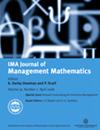供应商基础的两部分关税合同设计:一种统一的方法
IF 4.3
3区 工程技术
Q3 MANAGEMENT
引用次数: 0
摘要
传统的合同设计主要是为了协调二元关系中的决策。在网络环境和许多商品和服务的可变成本接近零的新时代,出于两个原因,需要采用不同的合同设计方法。首先,向不同目标、规模和商业实践的多个承包商提供一套合同,将使每个承包商都能选择最合适的合同。其次,鉴于大多数先前的研究都没有考虑准固定成本,了解供应商基础的两部分关税合同及其变体、基于准固定成本的新变体以及供应链各方之间的相关决策序列是有帮助的。我们提出了一种统一的方法来设置合同参数,以便不同的变体具有可比较的性能结果。研究结果和获得的见解表明,所提出的方法应改善零售商对其供应商基础的管理,并使整个供应链的各方受益。本文章由计算机程序翻译,如有差异,请以英文原文为准。
Two-part tariff contract design for a supplier base: a unifying methodology
Conventional contract designs largely aim to coordinate decisions in dyadic relationships. In the new era of network environments and near-zero variable costs for many goods and services, a different approach to contract design is required for two reasons. First, offering a set of contracts to multiple contractors of different objectives, sizes, and business practices will allow each to choose the most suitable contract. Second, given that most previous studies have not considered quasi-fixed costs, it is helpful to understand two-part tariff contracts and their variants for a supplier base, new variants based on quasi-fixed costs, and related decision sequences between the parties in a supply chain. We propose a unifying methodology to set the contract parameters so that the different variants will have comparable performance outcomes. The results and the insights gained suggest that the proposed methodology should improve a retailer’s management of its supplier base and also benefit all parties throughout the supply chain.
求助全文
通过发布文献求助,成功后即可免费获取论文全文。
去求助
来源期刊

IMA Journal of Management Mathematics
OPERATIONS RESEARCH & MANAGEMENT SCIENCE-MATHEMATICS, INTERDISCIPLINARY APPLICATIONS
CiteScore
4.70
自引率
17.60%
发文量
15
审稿时长
>12 weeks
期刊介绍:
The mission of this quarterly journal is to publish mathematical research of the highest quality, impact and relevance that can be directly utilised or have demonstrable potential to be employed by managers in profit, not-for-profit, third party and governmental/public organisations to improve their practices. Thus the research must be quantitative and of the highest quality if it is to be published in the journal. Furthermore, the outcome of the research must be ultimately useful for managers. The journal also publishes novel meta-analyses of the literature, reviews of the "state-of-the art" in a manner that provides new insight, and genuine applications of mathematics to real-world problems in the form of case studies. The journal welcomes papers dealing with topics in Operational Research and Management Science, Operations Management, Decision Sciences, Transportation Science, Marketing Science, Analytics, and Financial and Risk Modelling.
 求助内容:
求助内容: 应助结果提醒方式:
应助结果提醒方式:


